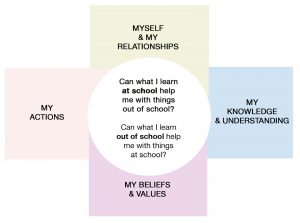August 20, 2024
Many institutions of learning have been disrupted with students questioning leadership at all levels. Administrators, educators and students need to find ways of listening to each other in healthy debate. This can often be difficult, as some students become so emotional that they lose self control, and can’t listen to or hear what is being said. So many of our students are disturbed by the conflicts that surround us and are often despondent, and find the impact of these are affecting their mental health. Students see domestic violence, schoolyard violence, street violence, and on the world stage, wars and the climate catastrophe. It is no wonder the levels of stress and mental health issues are sky high.
In this context, what are the possibilities offered by Peace Education? “Peace education refers to the process of promoting the knowledge, skills, attitudes and values needed to bring about behavior changes that will enable children, youth and adults to prevent conflict and violence, both overt and structural; to resolve conflict peacefully;” (UNICEF,1999). There are many different aspects of Peace Education, eg. Conflict resolution, human rights, gender and social emotional learning education. Peace education is not a new idea and we can look back at educators from the past such as Paulo Freire, John Dewey and Maria Montessori. They all saw world problems in their own times affecting their students, and advocated for Peace Education. So we have an old problem that unfortunately is growing larger and larger.
Often schools have students painting doves and symbols of peace to celebrate Peace Day to create awareness, but students may not make overt connections between these creative activities and taking action.
Some questions to consider:
- What does Peace Education mean to you? Is it something that you include and embed into your current practice?
- Is Peace Education something that could be more explicitly included in mission, vision, values, community projects, clubs, etc.?
- Could your school focus on interdisciplinary or transdisciplinary learning one year with a focus on Peace Education?
- Are there inspiring people exemplifying this kind of work in your local communities?
Some schools are implementing restorative practices to resolve conflict, for example focusing on strategies that work with the basic principles of restorative justice. Although the process may only capture a small slice of a community, the concepts and ideas can be very usefully employed in the school setting. Restorative is a powerful word, defined as ‘having the ability to restore health, strength, or well-being’ (Oxford Languages Dictionary). Restorative principles complement and align with our Harbord & Khan Thinking Toolsⓒ and Harbord & Khan Ethical Educational Modelⓒ and can support student wellbeing and conflict resolution.
Using The Transfer Toolⓒ can highlight students’ awareness about action they can take both at school and outside school and support them in navigating difficult issues and ethical dilemmas they may face regarding their self-awareness and relationships, knowledge and understanding, beliefs and values and actions.

- Is there KNOWLEDGE & UNDERSTANDING about Peace Education that students can in turn teach their families and communities about?
- Can students identify opportunities to transfer their learning about Peace Education to impact their BELIEFS and ACTIONS out of school?
How can we provide students with opportunities to develop school and community wide initiatives to foster Peace Education? They can be inspired by initiatives such as the global Non-Violence Project. This offers a ‘School for Peace Program’, and has three subjects: Self-esteem, conflict management and non-violence. Additionally, they have a Sports for Peace Program (12-19 years) designed for sports coaches and others involved with sports discipline to embed life skills such as conflict resolution into their players’ training. Another of the programs is working to change how schools, families and communities change how bullying is addressed by using a school, Teacher, student and family approach. The statistics quoted of students being bullied are ridiculously high. 1 in 3 children are victims of bullying in most countries and when you consider that over a billion children are in school each day, the effects and consequences are extremely worrying. This foundation explains how the violence resulting from bullying impacts the student who is bullied, the bystanders and the bully.
In the face of so much anxiety and trauma that young people are dealing with, Peace Education and Thinking Tools may feel like a drop in the ocean. However they still provide schools and students with a framework that can support new perspectives. In our latest book ‘21 Visual Thinking Tools for the Classroom: Developing Real-World Problem Solvers in Grades 5-10’, we share a success story. A Grade 5 teacher used one of our tools to discuss bullying with the students. One of them subsequently went home and told her parents that she was being bullied. That may be just one win, but we hope our tools can contribute to many more.
References
Harbord, M. J., & Khan, S. R. (2024). 21 visual thinking tools for the classroom : developing real-world problem solvers in grades 5-10. Routledge.
The Non-Violence Project Foundation (Ed.). (2024). Education & training/Programs for 7-18 sports for peace. Nonviolence.com. Retrieved July 23, 2024, from https://nonviolence.com/education/programs-for-7-18/sports-for-peace/
Woolf, N. (2024). How to implement restorative practices in your school. Panorama Education. Retrieved July 23, 2024, from https://www.panoramaed.com/blog/restorative-practices-to-implement
You may also be interested in reading more articles written by Harbord & Khan for Intrepid Ed News.

